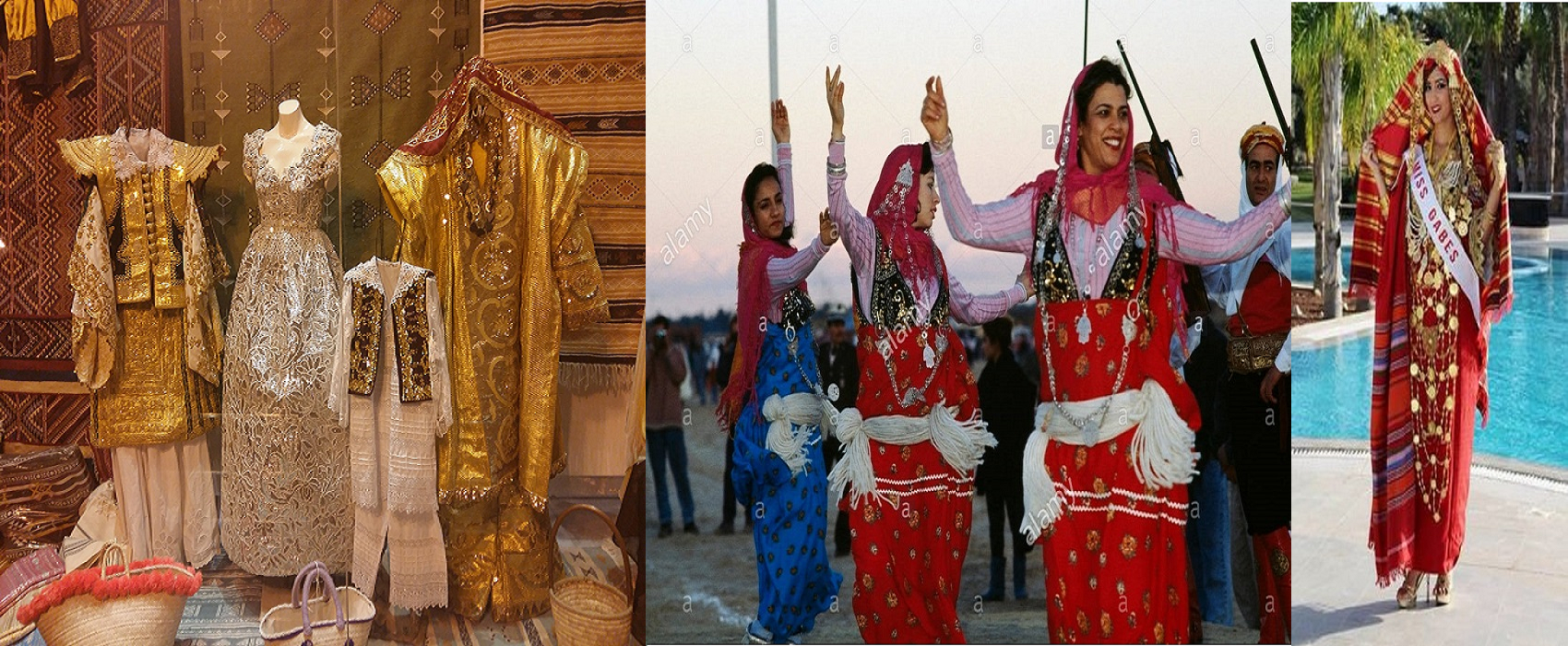Jebba

The most popular traditional male costume is the Jebba. It is still worn by some men. The Jebba is made of silk and wool. It covers almost the whole body as the only parts that will be showing are the forearms and the calves. The Jebba can be worn with a Farmla which is a vest. Sometimes you will see a Sadra or Badia as well. The outfit is finished off with a jacket that is called a Montane and some baggy trousers or Sirouel. A silk sash is used as a sort of belt right at the waist. There are many different colors when it comes to the Jebba and t is considered a ceremonial garment. You will also see the traditional round felt hat called the Chechia.

